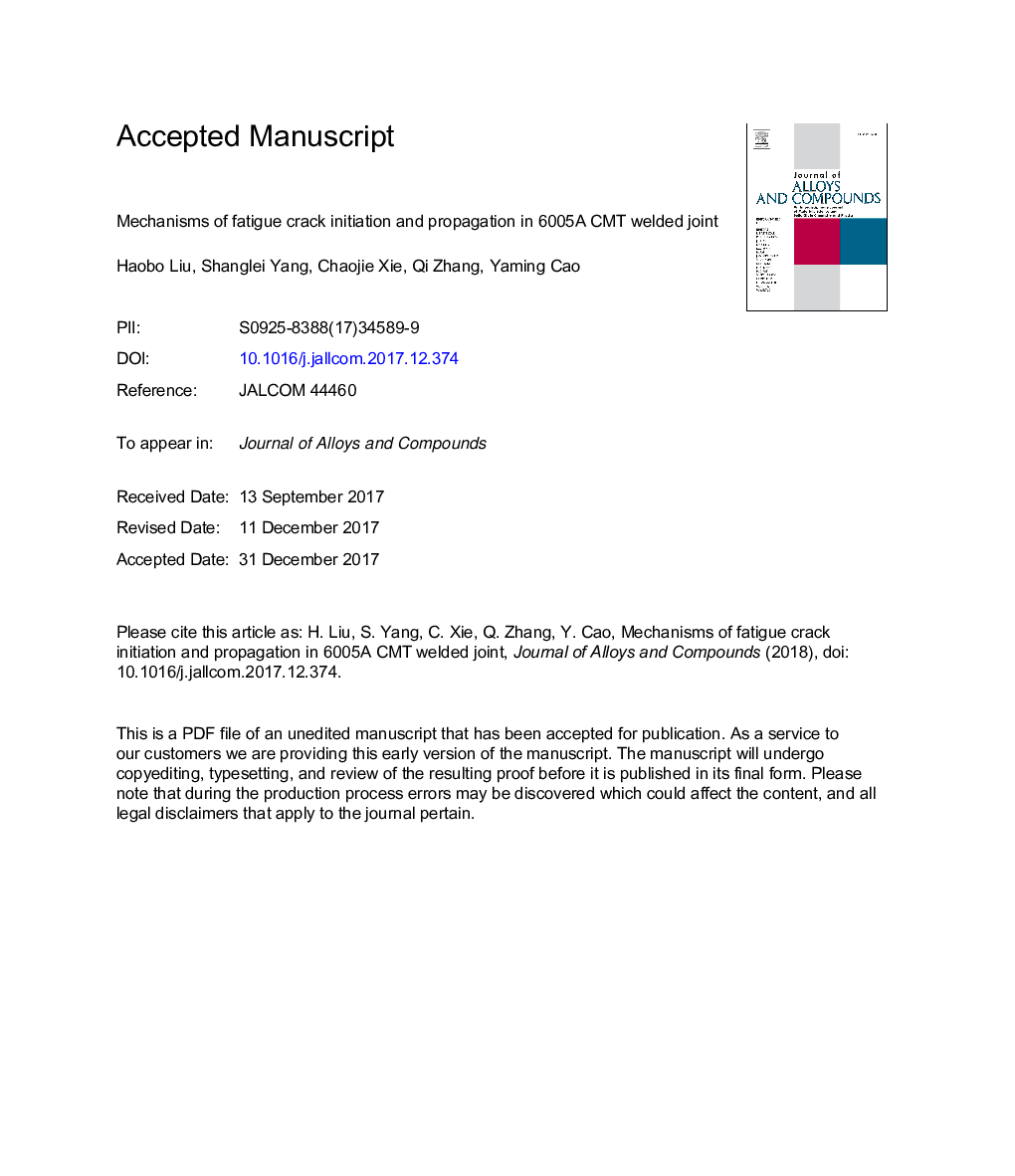| Article ID | Journal | Published Year | Pages | File Type |
|---|---|---|---|---|
| 7993344 | Journal of Alloys and Compounds | 2018 | 18 Pages |
Abstract
Detailed microstructures of (base metal) BM, (welding zone) WZ, and (heat affected zone) HAZ, fracture appearance, and surface fatigue damage were analyzed by optical microscopy (OM), scanning electron microscopy (SEM), and energy dispersive spectroscopy (EDS). The phases distribution which had serious effects in fatigue crack initiation in the welding joint was analyzed by X-ray diffraction (XRD). The fatigue test of the polished samples has been performed at stress ratio of 0.1. The grains in the WZ, refined by stirring action of the arc, hindered crack propagation. All samples fractured in the WZ due to micropores, which was the primary crack initiation model in the weld joint. Microcracks, with no propagation, initiated around secondary phases due to interaction between dislocations and phases. Z-shaped extension, which is typical in the stable crack-propagation stage, existed on the surface due to tearing-stress action. Plastic distortion caused by fatigue-crack closure, was found near the crack tip.
Keywords
Related Topics
Physical Sciences and Engineering
Materials Science
Metals and Alloys
Authors
Haobo Liu, Shanglei Yang, Chaojie Xie, Qi Zhang, Yaming Cao,
